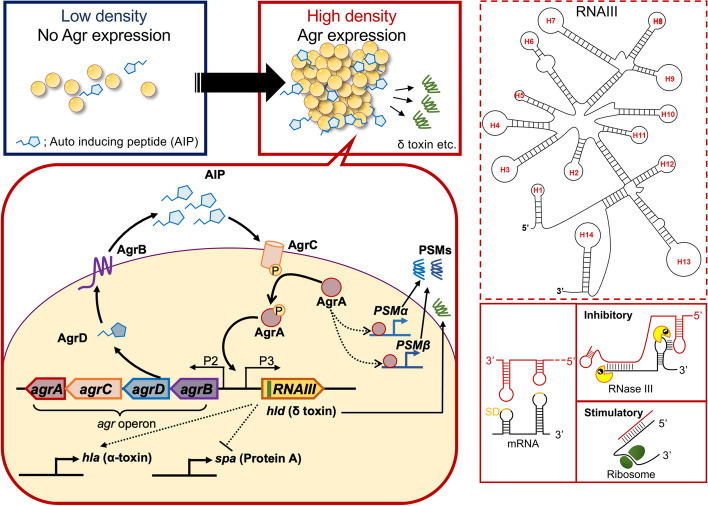Fig. 1.
Agr quorum sensing in Staphylococcus aureus. S. aureus consistently releases AIP. When the population density and corresponding AIP reaches the threshold, the receptor on the cell surface, AgrC, is activated via autophosphorylation of the histidine kinase. The phosphate is transferred to AgrA, which in turn binds and activates two bidirectional promoters, P2 and P3 in agr operon. The P2 promoter drives the autoregulation circuit of Agr, by inducing the expression of agrBDCA operon, that encodes the machinery of the QS system. AgrD is cleaved by AgrB, a trans-membrane peptidase, to form of AIP. The P3 promoter regulates various toxins via RNAIII, which is a large regulatory RNA. RNAIII exhibits a complex secondary structure with several C-rich hairpin loops, many of which align with the Shine-Dalgarno sequence of targeted genes. These interactions can manifest as either inhibitory or stimulatory. RNAIII also encodes hld, a gene responsible for δ-toxin. Agr accessory gene receptor, AIP auto-inducing peptide, QS quorum-sensing, SD Shine-Dalgarno sequence

